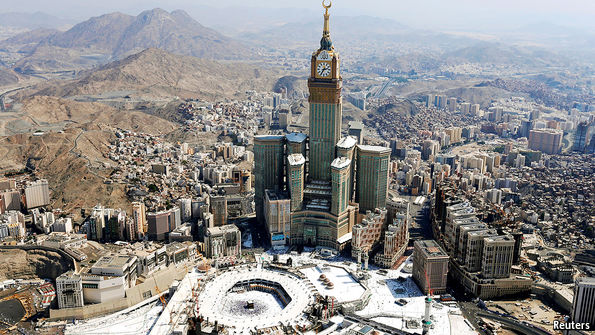From The Economist

The Middle East’s largest building project has effaced 1,400 years of Islamic history
Demolition, say officials, is the inevitable price of expansion. In 1950, before it all began, 50,000 pilgrims perambulated round the Kaaba, the heart of the haj ritual. Last year, 7.5m did so. Within three years, the authorities are planning to double that huge number. “There’s no other solution,” says Anas Serafi, an architect and member of the board of Jabal Omar Development. “How else could we absorb millions of pilgrims?” Casualties are a regrettable by-product: in September 2015, the world’s largest mobile crane toppled on the Grand Mosque, killing 107 pilgrims. But two weeks later more than 2,000 pilgrims were killed in a stampede, highlighting the dangers of a lack of space.
As Mecca’s custodian, King Salman bin Abdel Aziz sees both his prestige and his pocket benefit from the increasing traffic. Under the government’s transformation plan, revenue from pilgrimages will grow to compete with those from oil. Billions are being spent on railways, parking for 18,000 buses to transport pilgrims and hotels for them to stay in, heavy with gilded chandeliers. The McDonald’s golden arches gleam outside the gates of the Grand Mosque.
So thorough is the erasure that some suspect the Saudi royals are determined to finish a task begun in the 18th century, when from Arabia’s unruly hinterland the Al Saud and allied Bedouin tribes rose up against the Ottomans. Declaring a jihad, they pitted their puritanical strain of Islam, eponymously known as Wahhabism, first against the Empire’s multi-religious rule and then, after its collapse in the first world war, against the peninsula’s other Islamic rites. As part of the campaign of territorial and spiritual unification, called tawhid, they conquered Mecca in 1924.






